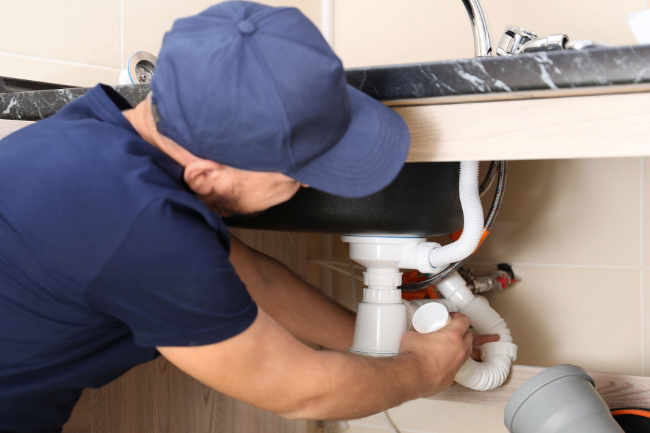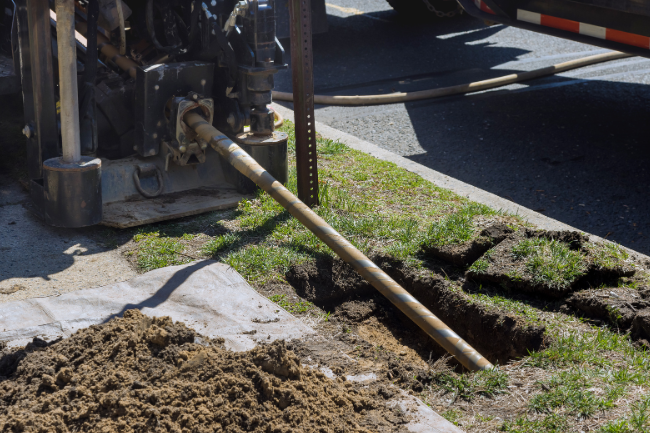Why Use Lateral Lining On Your High-Rise?
Posted by William Heinselman on
 Regardless of who we are, we all have specific services in our homes, and one of the most important is our water control pipes—sewer, rainwater, and so forth—that often are made of cast iron. Sitting water on the roof and raw sewage are risks to our building and to our health. But what happens if a leak develops in one of these pipes? In a residential situation, that’s just the gutter for rainwater, and that’s easy to fix. But what if one of your sewer pipes develops a leak? Or, in a high-rise, what if your rainwater pipe from the roof develops a leak? That runs right through your building, and any leak means that the units inside of your high-rise is at risk for water damage—condominiums, offices, anything in between!
Regardless of who we are, we all have specific services in our homes, and one of the most important is our water control pipes—sewer, rainwater, and so forth—that often are made of cast iron. Sitting water on the roof and raw sewage are risks to our building and to our health. But what happens if a leak develops in one of these pipes? In a residential situation, that’s just the gutter for rainwater, and that’s easy to fix. But what if one of your sewer pipes develops a leak? Or, in a high-rise, what if your rainwater pipe from the roof develops a leak? That runs right through your building, and any leak means that the units inside of your high-rise is at risk for water damage—condominiums, offices, anything in between!
The Problem
The old method would have been to open everything up and replace the pipes. Again, it’s a little simpler for residential, but the process is the same for all buildings. It means digging into each of the areas where the pipes are hidden and replacing the entire thing. You’d need to hire a plumber for a long time to break through walls, tubs, and your marble floors if you’re running an office building or a high end condominium building. That’s a lot of destruction and chaos to have going on. You might be wondering if there’s a simpler solution.
The Solution
Well, there is. Cured-in-place pipe (CIPP) lining and lateral lining is an easier solution. Consider the above example. Can you imagine the time it would take to undergo a project like that, especially if the building is large (like a high-rise)? Not to mention that if the building houses condominiums, you need to go into each individual affected unit and disrupt their homes to replace these pipes. If there’s a leak and you don’t, you’d be facing even more disruption thanks to your angry tenants! However, with CIPP lining, you’ll not have to worry so much about that part. CIPP can be done from the entry points into the lines, usually located on the roof of the building.
For the rainwater pipe, it’s usually just a straight run down to the side of the building. This makes it easy as cake. The lining can be done from the roof with no frills and no mess in a single day. We would bring our machine and run it down the pipe, line it, and fix all of the problems. Remember, there’s a myriad of ways your pipe could break, such as rust (thanks to that cast iron) or by way of earthquake.
For the sewer pipe, it’s a bit more complex. The sewer pipe runs down through the building into the ground where it ties into the public sewer system and shoots off to take care of each unit’s sewage and wastewater. It’s these offshoots that make it more complex, but it’s still an easier system than the aforementioned alternative. We can go in, line the pipe, and then cut out the offshoots and line them laterally, making a complete seal around all of the pipes. On the ground level, we can go into the pipe from either an access structure or underneath the soil. Between those two, we can create a complete seal around all the pipes, eliminating the need to replace those rusty cast iron pipes.
If you’re not sure about whether you need to have your pipes lined or whether it’s the right option, don’t just trust this little article—call a professional to ask more questions. Every building is different and every situation is different. Just don’t let your problem get the better of you. If there’s a leak in your pipes, don’t let it go, or your tenants won’t like it too much—and therefore neither will you.
Topics: Trenchless Technology

![Repiping Your Sacramento Home [6 Steps]](https://www.expresssewer.com/hs-fs/hubfs/plumbing%20tools%20and%20blueprints.jpeg?width=550)




